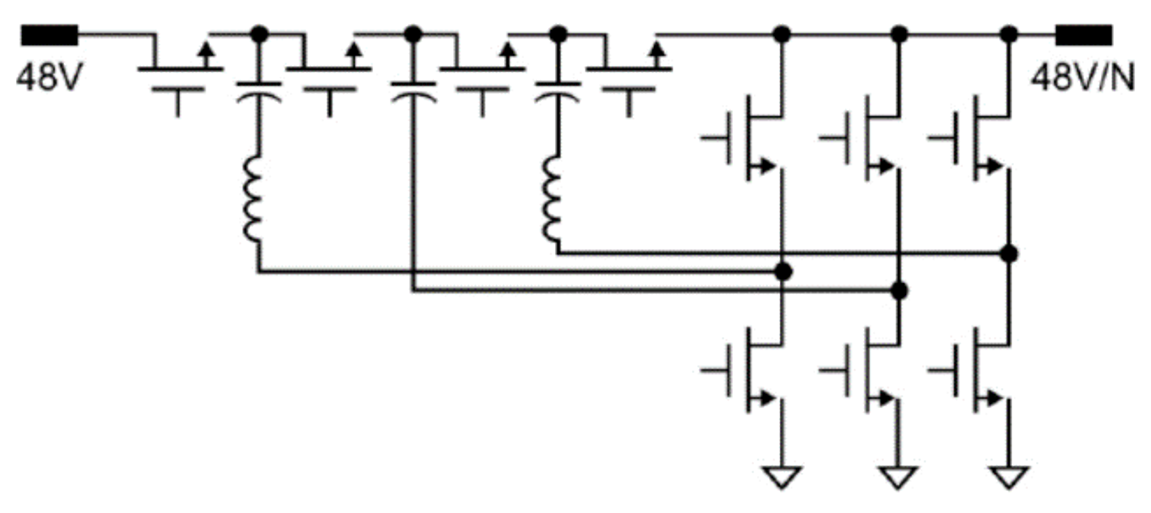Uncontrolled rectifiers are one of the simplest AC-DC conversion circuits in power electronics. These circuits are called "uncontrolled" because they employ uncontrolled power electronic devices, such as diodes. In uncontrolled rectifiers, AC to DC is converted through diodes, which are passive electronic devices that allow current to flow in only one direction.
Single-phase half-wave and full-wave rectifiers are the most straightforward types of uncontrolled rectifiers. They are commonly used in low-power applications where efficiency is not a significant concern. Three-phase half-wave and full-wave rectifiers, on the other hand, are employed in high-power applications where three-phase AC power is accessible. Center-tap rectifiers, voltage doubler rectifiers, and voltage multiplier rectifiers, among other uncontrolled rectifiers, are also utilized in various applications. Filtering is a crucial factor in uncontrolled rectifiers since the output of these circuits typically has a considerable amount of AC ripple. The use of filters, such as capacitors and inductors, helps to mitigate the AC ripple and provides a more stable DC voltage output. Although uncontrolled rectifiers have lower efficiency than more sophisticated, controlled rectifiers, they remain an indispensable component of many power electronics systems due to their simplicity and reliability.
The main circuit topology of a three-phase diode rectifier comprises three diodes connected to each of the three phases of a transformer's secondary winding. The diodes are commonly configured in an uncontrolled bridge arrangement and connected to the three phases of an AC voltage source. The diodes rectify the input AC voltage, resulting in a DC voltage at the output.
The circuit operates based on the properties of diodes, which are semiconductor electronic devices that allow current to flow in only one direction. When a diode is forward biased, which occurs when the voltage applied to its anode is greater than that applied to its cathode, it acts as a low resistance, enabling current to flow through it. Conversely, when the diode is reverse biased, meaning the voltage applied to its cathode is greater than that applied to its anode, it acts as a high resistance, preventing current from flowing. This characteristic of diodes is critical for the operation of the rectifier circuit.
Single-Phase Half-Wave Rectifiers
Single-phase half-wave rectifiers are basic uncontrolled rectifiers that are simple in design. This circuit consists of a single diode and a load resistor connected in series to an AC source. During the positive half-cycle of the AC voltage, the diode is forward-biased and conducts current, allowing the current to flow through the load resistor. However, during the negative half-cycle, the diode becomes reverse-biased, and no current flows through the load resistor. Thus, the output voltage across the load resistor is pulsating DC, with only half of the input AC waveform being utilized.
The single-phase half-wave rectifier is associated with some disadvantages, this includes its low efficiency, which is typically around 40%. This is due to the fact that during the negative half-cycle of the AC voltage, when the diode is not conducting, half of the input power is lost. Furthermore, the output voltage produced by the rectifier exhibits high ripple voltage, which can pose challenges for electronic devices.

Figure 2: Digression: The efficiency of a half-wave diode rectifier
Assume that the peak voltage across the resistor R is Vmax.
The average DC voltage is calculated as follows:
$$V_{dc} = \frac{1}{2\pi - 0} \left( \int_0^\pi V_{\text{max}} \sin x \, dx + \int_\pi^{2\pi} 0 \, dx \right)$$ $$V_{dc} = \frac{1}{2\pi} \int_0^\pi V_{\text{max}} \sin x \, dx$$ $$V_{dc} = \frac{1}{2\pi} V_{\text{max}} (-\cos \pi - (-\cos 0))$$ $$V_{dc} = \frac{V_{\text{max}}}{\pi}$$Thus:
$$I_{dc} = \frac{V_{\text{max}}}{R} \frac{1}{\pi} = \frac{I_{\text{max}}}{\pi}$$The rms current in AC circuit is calculated this way:
$$I_{rms} = \sqrt{\frac{1}{2\pi-0} \left( \int_{0}^{\pi} I_{\text{max}}^2 \sin^2 x \, dx + \int_{\pi}^{2\pi} 0 \, dx \right)}$$ $$I_{rms} = \sqrt{\frac{1}{2\pi} \int_{0}^{\pi} I_{\text{max}}^2 \sin^2 x \, dx}$$ $$I_{rms} = \sqrt{\frac{I_{\text{max}}^2}{2\pi} \int_{0}^{\pi} \frac{1-\cos 2x}{2} \, dx}$$ $$I_{rms} = \sqrt{\frac{I_{\text{max}}^2}{4\pi} [(π-0)-\frac{1}{2} (\sin 2π-\sin 0)]}$$ $$I_{rms} = \frac{I_{\text{max}}}{2}$$The input AC power and output DC power are equal to:
$$P_{ac} = I_{rms}^{2} \cdot (R_{s} + r_{D} + R)$$ $$P_{dc} = I_{dc}^{2} \cdot R$$Where:
RS – transformer secondary winding resistance
rD – load diode resistance
R – load resistance
The efficiency of a half-wave rectifier is defined as ratio of DC power available at the load to input AC power:
$$\eta = \frac{P_{dc}}{P_{ac}} = \frac{I_{dc}^{2} \cdot R}{I_{rms}^{2} \cdot (R_s + r_D + R)} \approx \frac{I_{dc}^{2} \cdot R}{I_{rms}^{2} \cdot R} = \left(\frac{I_{max}}{\pi}\right)^{2} \left(\frac{2}{I_{max}}\right)^{2} = \frac{4}{\pi^{2}} = 40.53\%$$Despite its low efficiency and high ripple voltage, the single-phase half-wave rectifier has some applications in small power supplies or circuits where low cost is crucial and the output ripple voltage can be tolerated.
Three-Phase Half-Wave Rectifiers
Three-phase half-wave rectifiers are utilized in power electronics applications where the conversion of three-phase AC power to DC power is required. They are more efficient than their single-phase counterparts as they make use of all three phases of the AC power. However, the output DC voltage still experiences pulsations and needs additional filtering to achieve a stable DC voltage.
The three-phase half-wave rectifier has the advantage of simplicity since it requires only three diodes. However, its output voltage is lower than other types of rectifiers since only one of the three phases is used at a time.

Figure 3: Half-Wave Three-Phase Diode Rectifier
Let’s assume that phase voltage VA starts at 0°. During the time interval between 0° and 30° the voltage at the diode D3 anode is the highest one (VC > VA > VB). Hence, diode D3 conducts, and diodes D1 and D2 don’t. Thereafter, during the time interval between 30° and 150° the voltage at the diode D1 anode is the highest one (30°-90°: VA > VC > VB; 90°-150°: VA > VB > VC). Hence, diode D1 conducts, and diodes D2 and D3 don’t. And so on… The waveform of the voltage at the output of the rectifier (on the load) is depicted in the figure below.

Figure 4: Output Voltage Waveform of Half-Wave Three-Phase Diode Rectifier
If we designate the peak input voltage as VP, the average value of the output voltage waveform is:
$$V_{DC} = \frac{3\sqrt{3}}{2\pi} V_{P} = 0.83 \cdot V_{P}$$This can limit its applications, particularly in cases where a higher DC voltage is required. The three-phase half-wave rectifier also produces high levels of harmonic distortion in the input current, which can cause problems such as increased losses in power transmission and distribution systems and increased electromagnetic interference.
The three-phase half-wave rectifier, while having a lower output voltage, offers benefits such as simplicity and lower cost due to its use of only three diodes. However, its high level of harmonic distortion in the input current can lead to issues like power losses in transmission and distribution systems and electromagnetic interference. Thus, when designing power electronics systems, it's essential to consider the trade-offs between the advantages and disadvantages of different rectifier types.
Three-Phase Full-Wave Rectifiers
Figure 5 illustrates an unregulated three-phase diode rectifier circuit that utilizes a full-wave bridge configuration consisting of six diodes. The input of the circuit is linked to a three-phase AC power source, while the output is connected to a DC load. The functioning of the circuit is described as follows.

Figure 5: Uncontrolled Full-Wave Three-Phase Diode Rectifier
Let’s assume that the phase A voltage starts at 0° (see figure below).

Figure 6: Output Voltage Waveform of Full-Wave Three-Phase Diode Rectifier
- Time period from 0° to 30°
VC > VA > VB ⇒ Diodes D5 and D4 are ON
Diode D1 is OFF (Anode voltage VA is lower than cathode voltage VC)
Diode D2 is OFF (Anode voltage VB is lower than cathode voltage VA)
Diode D3 is OFF (Anode voltage VB is lower than cathode voltage VC)
Diode D6 is OFF (Anode voltage VB is lower than cathode voltage VC) - 2) Time period from 30° to 90°
VA > VC > VB ⇒ Diodes D1 and D4 are ON
Diode D2 is OFF (Anode voltage VB is lower than cathode voltage VA)
Diode D3 is OFF (Anode voltage VB is lower than cathode voltage VA)
Diode D5 is OFF (Anode voltage VC is lower than cathode voltage VA)
Diode D6 is OFF (Anode voltage VB is lower than cathode voltage VC)
So, the load voltage is equal to: Vload = VC - VB
So, the load voltage is equal to: Vload = VA - VB
And so on… The waveform of the voltage at the output of the rectifier (on the load) is depicted in the figure above.
Other Single-Phase Rectifier Types
In power electronics systems, various uncontrolled rectifiers are utilized, and among them is the center-tapped rectifier, which is commonly used in low-power settings. This type of rectifier employs a center-tapped transformer and two diodes to create a pulsating DC voltage output. Meanwhile, the bridge rectifier is another type of uncontrolled rectifier that is frequently employed in numerous applications due to its capacity to produce a full-wave rectified output. The bridge rectifier is composed of four diodes arranged in a bridge configuration to generate a DC output.
The voltage doubler rectifier is yet another form of uncontrolled rectifier that is utilized in applications necessitating a higher DC voltage output than a typical rectifier. This rectifier makes use of two diodes and two capacitors to increase the output voltage of a single-phase AC source. Additionally, other uncontrolled rectifier topologies are employed in specific applications, they include the Graetz circuit for high-power DC applications and the Cockcroft-Walton multiplier for high-voltage DC applications. These rectifiers use a blend of diodes and capacitors to generate high-power or high-voltage DC outputs. Regardless of the particular type of uncontrolled rectifier employed, filtering is typically required to minimize the ripple voltage present in the output waveform. Capacitors, inductors, or a combination of both are used to smooth out the output waveform and minimize the ripple voltage.
Filtering
Filtering is a crucial factor to take into account when designing uncontrolled rectifiers since it aids in smoothing out the output voltage and diminishing the ripple voltage. Ripple voltage refers to the minor fluctuations in the output voltage waveform caused by the pulsating nature of the rectified AC signal. These variations can lead to issues such as decreased precision in electronic systems, heightened electromagnetic interference, and decreased reliability of electronic components.
A widely used approach to minimize ripple voltage is by employing a capacitor filter. A capacitor filter is made up of a capacitor connected in parallel with the load resistance. As the voltage rises, the capacitor will accumulate charge, absorbing energy from the circuit. Conversely, as the voltage across the load resistor decreases, the capacitor will discharge its stored energy into the circuit, preventing the voltage from falling too low. The degree of ripple reduction is determined by the capacitance value of the filter capacitor, with greater capacitance values offering better filtering performance.
Lastly, an alternative is to use a combination of capacitor and inductor filters, referred to as an LC filter. LC filters offer better filtering performance than using just capacitor or inductor filters alone, although they are more intricate to design and implement. The selection of filter type and design is based on specific application requirements, such as the required level of ripple reduction, cost, and physical size restrictions.





直接登录
创建新帐号